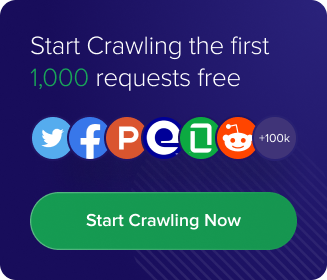The need to scrape different sources for information has become a rising need. Businesses and researchers aim to gather valuable data from the internet. Decision-makers from different sectors depend on web scraping to collect meaningful insights. They extract competitor’s information, check prices, and assess customer feedback.
Yet, as the need for data grows, so do the obstacles associated with web scraping.
In recent times, stricter data policies and compliance methods have made extraction challenging. To mitigate this, businesses have adopted advanced methods to access websites.
The article explores the top web scraping challenges and practical solutions.
1. Advanced Bot Detection and Anti-Scraping Measures
There is a rising need to adopt advanced anti-scraping detection systems. These solutions do more that IP blocking to detect automated scrapers. Advanced technologies track browsing patterns, mouse movements, and even typing behaviours.
Traditional scrapers depend on user agents and basic proxies. But these methods are becoming obsolete. Scraping modern websites needs dynamic and behaviour-based detection techniques.
Some prevalent anti-bot mechanisms include:
- Identifying unnatural mouse movements, scrolling patterns, or a lack of human-like interactions.
- Websites gather information about browsers, operating systems, and screen resolutions to recognize bots.
- Machine learning models track user sessions and flag automated behaviors.
Solution:
Web scrapers need to mimic human behaviour to avoid detected by advanced bots. The Crawling API is designed to tackle complex anti-bot mechanisms by:
- Bypassing CAPTCHAs and IP blocks.
- Mimicking genuine user behavior to evade detection.
- Rotating IP addresses and user agents to remain undetected.
- Ensuring high success rates for requests without blocks.
2. Increased JavaScript-Rendered Websites
More websites use JavaScript frameworks such as React, Angular, and Vue. These languages provide dynamic content. When they load data, it doesn’t appear in the initial page source. But generated by JavaScript following user interactions or API calls.
Solution:
Scrapers need to use headless browsing and advanced scraping techniques to extract data. They interact with the page like human users. Crawlbase’s Crawler handles dynamic content without the need for complex setups:
- It fetches dynamic content without requiring a headless browser to reduce resource costs.
- It extracts data from JavaScript-rendered pages, simulating how users load content.
- It avoids unnecessary browser automation, resulting in faster and more scalable scraping.
3. CAPTCHA and Human Verification Barriers
Bot detection techniques like CAPTCHAs and human verification challenges are becoming common. These advanced methods prevent scrapers from extracting data. Modern tools like Google reCAPTCHA, hCaptcha, and FunCAPTCHA tell humans apart from bots.
Solution:
Web scrapers use a combination of intelligent request management. They depend on AI-driven frameworks and methods to navigate CAPTCHAs.
The Crawling API tackles CAPTCHA challenges within the scraping process:
- Identifies and bypasses CAPTCHAs in the background.
- Simulates human-like behavior to lower the risk of triggering security protocols.
- Enhances request management to reduce disruptions and ensure smooth data extraction.
4. Frequent Website Structure Changes
Websites often change their HTML structure and API endpoints. They also change data delivery methods to enhance user experience. These frequent changes hinder scrapers from carrying out their tasks. They also break existing scrapers. This causes data extraction to fail. As a result, scripts need constant fixing.
Solution:
Scrapers need to be adaptive, flexible, and able to detect modifications. The Crawling API improves scraper resilience by:
- Extracting data in a structured format that minimizes dependence on fragile HTML selectors.
- Handling JavaScript-rendered dynamic content to avoid failures caused by missing elements.
- Offering automated proxy rotation to guarantee consistent access to updated pages.
5. IP Blocks and Rate Limiting
Many websites block scrapers by tracking their IP addresses. If too many requests come in, the site sees it as suspicious and stops them. These protective measures can include:
- Rate limiting: Websites set a cap on how many requests one IP can make in a short time.
- Geo-restrictions: Certain content is accessible only to users from designated regions.
- Blacklist mechanisms: If an IP scrapes too often, it can get banned for good.
If a scraper sends requests the wrong way, it can get flagged, blocked, or banned.
Solution:
To avoid blocks, scrapers need to manage requests well and switch IP addresses often. Crawlbase’s Smart AI Proxy assists web scrapers by:
- Rotating IPs to avoid bans.
- Distributing requests across various addresses.
- Bypassing geo-restrictions by accessing websites from different locations.
6. Legal and Ethical Considerations
Governments and organizations are implementing stricter data privacy laws and legal frameworks. Laws like GDPR, CCPA, and other rules now affect what data you can scrape. Also, some sites say “no scraping” in their robots.txt file or Terms of Service.
The legal risks associated with web scraping include:
- Scraping personal data without consent can lead to privacy violations.
- Violating the website’s ToS may result in legal repercussions.
- Intellectual property issues, when extracting proprietary or copyrighted dat
To ensure compliance with legal and ethical standards, web scrapers should:
- Adhere to robots.txt and ToS
- Steer clear of scraping personal identifiable information (PII)
- Use public or open data sources
7. Handling Large-Scale Data Scraping
Businesses rely more on big data. Scraping thousands or millions of pages becomes a big challenge. Large-scale scraping necessitates:
- Rapid data extraction while avoiding rate limits.
- Robust infrastructure to process and store extensive amounts of data.
- The ability to scale to meet rising scraping demands without compromising performance.
Common issues encountered in large-scale scraping include:
- Server overloads due to too many concurrent requests.
- Memory and storage limitations when handling vast datasets.
- Bottlenecks in the speed of data processing and extraction.
Solution:
Scrapers need strong infrastructure, parallel requests, and scalable data pipelines. Crawlbase handles large-scale data extraction, providing:
- Asynchronous requests to enhance efficiency and cut latency.
- Automatic request distribution to prevent overloads and bans.
- A scalable infrastructure that adapts to increasing scraping needs.
8. Dealing with Dynamic Content and AJAX Requests
Many modern websites use AJAX requests to load content without at once. This approach renders traditional scraping techniques ineffective for several reasons:
- Essential data isn’t in the initial HTML but comes from API calls.
- AJAX requests involve intricate headers, authentication, and tokens that hinder direct access.
- Data loads as users scroll, complicating the extraction process.
Solution:
Scrapers must capture network requests, get API responses, and mimic user actions. Our Crawling API addresses dynamic content by:
- It manages AJAX-based data extraction without the need for more setup.
- Overcoming JavaScript rendering issues minimizes the necessity for complex automation.
- Retrieving structured API responses for easier data processing.
9. Scraping Mobile-First and App-Based Content
Mobile-first websites and native apps are becoming more popular. Many platforms now show different content to mobile and desktop users. This happens through adaptive design. They also use mobile APIs instead of traditional web pages for data delivery.
Solution:
Scrapers need to mimic mobile environments. They also need to capture API requests. Smart AI Proxy assists web scrapers by:
- Rotating mobile IPs to overcome geo-restrictions and mobile-specific blocks.
- Imitating real mobile users by sending mobile headers and user-agent strings.
- Accessing mobile-specific content that desktop scrapers cannot reach.
10. Scaling and Maintaining Web Scrapers
Web scraping isn’t a one-off job. It’s essential to focus on long-term scalability and maintenance. As time goes on, scrapers encounter:
- Changes to websites that cause regular updates to the parsing logic.
- IP bans and rate limits that need a flexible approach to proxy rotation.
- Performance challenges when managing large amounts of data requests.
If scrapers aren’t maintained. They can malfunction, resulting in data inconsistencies and periods of inactivity.
Solution:
Scrapers need to incorporate automated monitoring and error handling. A modular and adaptive scraping architecture, and a distributed infrastructure for scaling. Crawlbase solutions assist by:
- Managing website changes to prevent the scraper from breaking.
- Offering automated proxy rotation to keep requests under the radar.
- Guaranteeing scalability through high-performance, asynchronous data extraction.
Final Thoughts
There are growing concerns about web scraping due to advanced bot detection. These intelligent solutions have made it challenging to extract dynamic content. Businesses have also highlighted these challenges in large-scale operations. Flexible scraping strategies enable organizations to navigate anti-scraping measures.
Crawlbase solutions allow businesses to extract insights to scale their scraping operations. You can also cut the risk of bans and legal issues. Web scraping is a vital resource for data-driven decision-making for enterprises. That’s why Crawlbase helps businesses maintain a competitive edge.
Frequently Asked Questions (FAQs)
What are the limitations of web scraping?
Websites can block web scraping. It may not work with complex data or dynamic content. You may need to update scripts often.
What are the risks of web scraping?
Scraping can violate a website’s terms of service. It may overload servers, causing slowdowns. You could face legal issues if not careful.
Can web scraping crash a website?
Yes, scraping too much data too fast can crash a website. It can put a lot of pressure on the website’s server.
How to scrape dynamic websites with Python?
Use libraries like Selenium or Playwright. These tools help load dynamic content before scraping.











